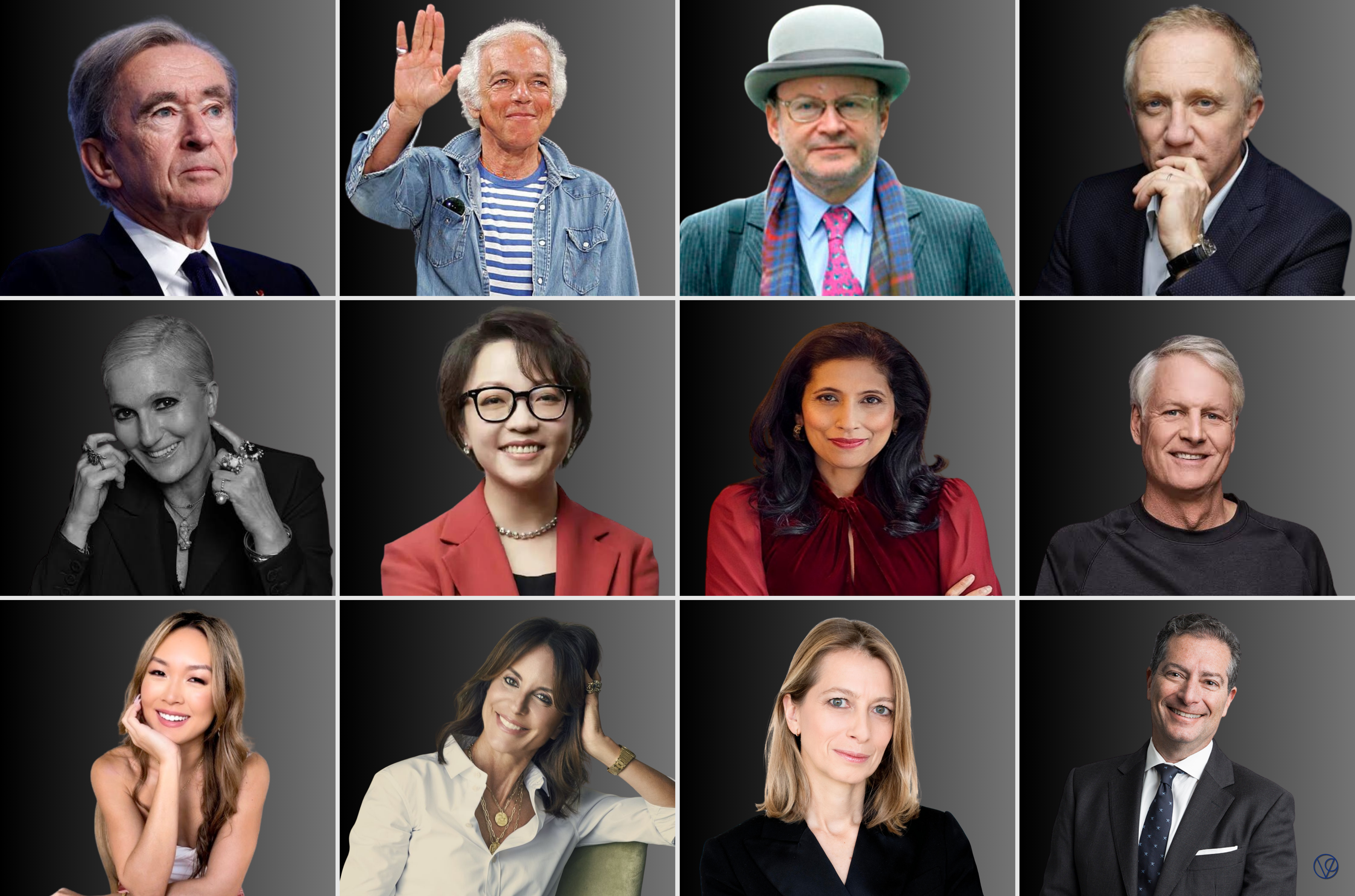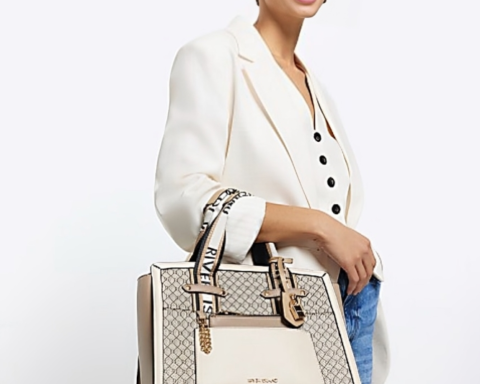Fashion is one of the world’s most competitive and lucrative industries. It’s a constantly evolving industry that requires a lot of creativity and innovation to become a luxury brand.
At the helm of these fashion brands are chief executive officers responsible for steering the companies towards success.
These CEOs play a significant role in the fashion industry, and their leadership styles and strategies can make or break a company.
The role of a CEO in the fashion industry is complex and demanding. They oversee all aspects of the business, from design and production to marketing and sales.
They must have a deep understanding of the fashion industry and be able to anticipate trends and shifts in consumer behavior.
Additionally, they must be able to manage a diverse group of employees, ranging from designers and creatives to salespeople and marketers.
Table of Contents
The fashion industry is highly competitive, and fashion brands are constantly vying for market share. The CEO’s job is to ensure that the brand stays relevant and continues to resonate with consumers.
They must be able to make tough decisions, such as when to pivot the brand’s strategy or when to launch a new product line.
Ultimately, a fashion brand’s success rests on its CEO’s shoulders, making it one of the most high-pressure positions in the industry.
The Role of CEOs in Fashion Brands
CEOs play a vital role in the success of fashion brands. They are responsible for leading the company, setting its vision, and shaping its culture. In this section, we will explore the impact of CEOs on fashion brands.
Leadership and Vision
CEOs are responsible for setting the direction of the company. They must have a clear vision of where they want the brand and how to get there.
A strong CEO will inspire employees to work towards a common goal and motivate them to achieve it.
They must also be able to adapt to changes in the market and make strategic decisions that will keep the brand competitive.
Impact on Company Culture
CEOs also have a significant impact on the culture of the company. They set the tone for how employees interact with each other and customers.
A CEO who values diversity and inclusion will create a welcoming workplace for people of all backgrounds.
They can also foster a culture of innovation and creativity that encourages employees to take risks and try new things.
Influence on Market Trends
Finally, CEOs have a significant influence on market trends. They can shape the direction of the industry by introducing new products and services or redefining what is considered fashionable.
A CEO who is well-connected in the industry can also use their influence to form partnerships and collaborations that will benefit the brand.
Leading Fashion Brands and Their CEOs
Fashion is one of the world’s most dynamic and competitive industries.
Fashion brands need visionary leaders who can navigate the industry’s ever-changing landscape to stay ahead of the curve.
This section looks closely at some leading fashion brands and their CEOs.
Luxury Brand Leaders
Luxury fashion brands are known for their high-end products and premium prices. These brands are often associated with exclusivity, quality, and prestige.
Some of the most well-known luxury brands in the world include LVMH, Chanel, Gucci, and Kering.
Bernard Arnault
Bernard Arnault is a towering figure in the world of luxury fashion, serving as the Chairman and CEO of LVMH, Moët Hennessy – Louis Vuitton, which is the world’s leading luxury products group.

His vision and leadership have been pivotal in establishing LVMH as a powerhouse in the industry, overseeing a prestigious portfolio of over 70 prestigious brands across various sectors such as wine and spirits, fashion and leather goods, perfumes and cosmetics, watches and jewelry, and selective retailing.
Arnault’s business acumen and strategic investments have not only expanded the group’s global footprint but have also significantly influenced fashion trends and luxury consumerism on a global scale.
Under Arnault’s guidance, LVMH has seen remarkable growth and has become synonymous with luxury, quality, and craftsmanship.
The group’s fashion and leather goods division, which includes iconic brands like Louis Vuitton, Dior, and Fendi, is particularly notable for its continued success and influence.
Arnault’s leadership style, which combines a keen eye for artistic excellence with a sharp sense for business, has led to the acquisition and development of brands that consistently resonate with consumers.
As of March 2024, Bernard Arnault holds the title of the world’s richest man, surpassing Elon Musk, according to Forbes financial data.
Alain Wertheimer

Chanel is a French luxury brand founded in 1909 by Coco Chanel. The current chairman of Chanel is Alain Wertheimer, who has been with the company since 1978.
Under his leadership, Chanel has continued to grow and expand its product offerings while maintaining its reputation as a luxury brand.
Leena Nair

Leena Nair achieved a historic milestone by being appointed as the first Indian-origin Global CEO of Chanel, the renowned French luxury fashion house, in January 2022.
Born in Kolhapur, Maharashtra, the 54-year-old executive has distinguished herself through professional triumphs, culminating in her leadership of the esteemed brand.
François-Henri Pinault
Kering is a French luxury goods company with several high-end fashion brands, including Gucci, Saint Laurent, and Balenciaga. Kering’s CEO is François-Henri Pinault, who took over in 2005.
Pinault has been instrumental in driving the growth of Kering and its various brands through strategic acquisitions and organic growth.
Retail Fashion CEOs
Retail fashion brands are known for their accessible price points and wide range of products. These brands are often associated with fast fashion and trend-driven designs.
Some of the world’s most well-known retail fashion brands include Nike, Coach, and Capri Holdings.
John Donahoe
Nike is an American multinational corporation that designs and sells athletic footwear, apparel, and accessories. The current CEO of Nike is John Donahoe, who took over the role in 2020.
Donahoe has a background in technology and has been focused on driving innovation at Nike, particularly in the areas of digital and sustainability.
Todd Kahn
Coach is an American luxury fashion company that specializes in leather goods. The CEO of Coach New York is Todd Kahn, who has been with the company since 2008.
Kahn has been instrumental in transforming Coach from a traditional leather goods brand to a more modern and fashion-forward brand.
Rising Stars in Fashion Leadership
In addition to established fashion brands, several rising stars in fashion leadership are making waves in the industry.
Joann Cheng
One such rising star is Joann Cheng, the CEO of Lanvin.
Cheng took over the role in 2020 and has been focused on revitalizing the brand, which had been struggling in recent years.
Alison Loehnis
Another rising star in fashion leadership is Alison Loehnis, the CEO of Net-a-Porter.
Loehnis has been with the company since 2007 and has played a key role in driving the growth of the online luxury retailer.
Under her leadership, Net-a-Porter has expanded its product offerings and launched several successful new initiatives.
Female Leadership in Fashion
The fashion industry has traditionally been male-dominated, but there has been a recent surge in female leadership.
This section explores the growth in female presence and notable female CEOs and founders in the fashion industry.
Growth in Female Presence
Over the years, there has been a significant increase in the number of women in executive positions in the fashion industry.
According to a report by McKinsey, companies with a higher proportion of women in leadership positions tend to perform better financially.
This has led to a concerted effort by many fashion brands to increase the number of women in executive roles.
One notable example is Leena Nair, the Chief Human Resources Officer at Unilever, who has been recognized for increasing the number of women in leadership roles.
Nair has been vocal about the importance of diversity and inclusion in the workplace and has implemented policies to support this.
*Leena Nair is now the CEO of Chanel.
Notable Female CEOs and Founders
Several female CEOs and founders have made their mark in the fashion industry.
Maria Grazia Chiuri
Maria Grazia Chiuri, the creative director at Dior, made history in 2016 when she became the first woman to hold the position in the brand’s 70-year history.
Under her leadership, Dior has seen significant growth and has become a champion for women’s rights.
Séverine Merle
Another notable female CEO is Séverine Merle, who was recently appointed CEO of Céline.
Merle has a wealth of experience in the fashion industry and has held leadership positions at several luxury brands, including Givenchy and Alexander McQueen.
Her appointment is a significant step forward for women in the fashion industry.
Strategic Decisions and Business Outcomes
Investments and Partnerships
One of the key responsibilities of a CEO is to make strategic investment and partnership decisions that can significantly impact the business’s success. Fashion brands are no exception.
By investing in new technologies, expanding into new markets, and forming partnerships with other companies, fashion brands can stay ahead of the competition and drive growth.
Ralph Lauren
For example, in 2022, Ralph Lauren’s CEO Patrice Louvet announced that the company would invest in its e-commerce platform to improve the customer experience and drive sales.
This investment paid off, with the company reporting a 20% increase in digital sales in the first quarter of 2023.
Similarly, Zara’s parent company, Inditex, has strategically invested in sustainable fashion and digitalization to stay ahead of the curve.
In addition to investments, partnerships can also be a key driver of growth for fashion brands.
For example, in 2023, Gucci announced a partnership with luxury e-commerce platform Farfetch to expand its digital footprint and reach new customers.
This partnership has allowed Gucci to tap into Farfetch’s extensive customer base and e-commerce expertise, driving the brand’s online sales.
Navigating Through Challenges
CEOs of fashion brands must also be able to navigate through challenges and crises, such as economic downturns and pandemics.
During the COVID-19 pandemic, many fashion brands faced significant challenges, including supply chain disruptions, store closures, and reduced consumer spending.
To navigate these challenges, CEOs had to be agile and make quick decisions to ensure the resilience of their businesses.
For example, during the pandemic, luxury fashion brand Burberry pivoted to producing personal protective equipment (PPE) for healthcare workers, demonstrating its commitment to social responsibility and contributing to the fight against the pandemic.
In addition to pivoting their businesses, CEOs also had to focus on building resilience for the future.
This involved strategic investments in digitalization and e-commerce and improving supply chain resilience to mitigate future disruptions.
Cultural and Social Influence of Fashion CEOs
The influence of Fashion CEOs goes beyond the fashion industry and reaches into the cultural and social spheres.
Fashion CEOs have the power to shape the industry’s future and promote a more inclusive and diverse environment.
Promoting an Inclusive Future
Fashion CEOs have the responsibility to promote an inclusive future for the industry. They can do so by ensuring that their human resources policies are inclusive and that they hire and promote employees based on their skills, not their gender, race, or ethnicity.
Alicia Sandve
Alicia Sandve, CEO of HeyMaeve, is an example of a Fashion CEO who has prioritized inclusivity in her company.
HeyMaeve has implemented policies that promote diversity and inclusivity, and they have also partnered with nonprofit organizations that support sexual assault survivors.
Fashion as a Voice for Social Causes
Fashion CEOs can also use their influence to support social causes and positively impact society.
They can use their platforms to raise awareness about important issues and support nonprofit organizations that align with their values.
For example, Destiny Rescue is a nonprofit organization that works to end child trafficking and exploitation.
Fashion CEOs can support this organization by donating profits or partnering with them to raise awareness about their cause.
How to become a CEO of a fashion company?
To become a CEO of a fashion company, one typically follows a series of steps involving education, gaining industry experience, and developing a strong understanding of business management and leadership. Here is a general path one might take:
- Earn a bachelor’s degree: Most CEOs start their careers by earning an undergraduate degree. For the fashion industry, relevant fields of study might include fashion design, fashion merchandising, or business administration.
- Build on-the-job experience: After completing your education, gaining experience in the fashion industry is crucial. This could involve working in various roles within fashion companies to understand different aspects of the business, such as design, production, marketing, and sales.
- Earn a master’s degree (optional): While not always required, many CEOs pursue a Master’s in Business Administration (MBA) or other relevant graduate degrees. This can provide a deeper understanding of business strategy and management. (
- Develop leadership skills: Aspiring CEOs must cultivate strong leadership qualities, including the ability to make strategic decisions, manage teams, and drive a company’s vision forward.
- Build a professional network: Networking with professionals in the fashion industry can lead to mentorship opportunities and connections that might help climb the corporate ladder.
- Understand finance and operations: A strong understanding of finance, budgeting, forecasting, and operations is important for a CEO, who will need to oversee these aspects of the company.
- Work your way up: Start in entry-level positions and progressively take on more responsibility. Show initiative, deliver results, and express your interest in leadership positions. Moving up within a company or across different companies in the industry can broaden your experience and prepare you for the top role.
- Stay current with industry trends: The fashion industry is dynamic, with rapid changes in trends, consumer behavior, and technology. It’s important to stay informed and adaptable. This might involve attending fashion shows, reading industry publications, and participating in professional associations.
- Demonstrate business acumen: As you gain experience, ensure you build a track record of successful business decisions. This could include successful product launches, marketing campaigns, or profitable partnerships.
- Cultivate a personal brand: Building a personal brand that aligns with the fashion industry can help establish you as a thought leader and influencer. This could involve speaking at industry events, contributing to trade publications, or maintaining an active professional social media presence.
- Seek out strategic positions: Aim for roles directly in the line of succession to the CEO, such as Chief Operating Officer (COO) or Chief Marketing Officer (CMO). These positions often provide the experience and visibility necessary to be considered for the CEO role.
- Be open to opportunities: Sometimes, the path to CEO might involve lateral moves to different companies or even different industries to gain broader experience.
- Prepare for the role: Once in a position to be considered for CEO, you may work closely with the current CEO, board of directors, or a professional coach to prepare for the transition into the role.
- Understand corporate governance: Knowledge of corporate governance and experience with boards of directors is crucial for a CEO, who must work closely with the board to set and implement the company’s strategic direction.
Remember, becoming a CEO is about meeting certain criteria and timing, opportunity, and sometimes a bit of luck.
It combines the right experience, leadership skills, industry knowledge, and the ability to capitalize on potential opportunities.
CEO in the fashion industry salary?
As of February 2024, the salary for a CEO in the fashion industry can vary widely depending on the company’s size, revenue, location, and the individual’s experience.
According to ZipRecruiter, the average annual pay for a Fashion CEO in the United States is around $93,552.
However, for top executives at larger and more prestigious fashion companies, salaries can be significantly higher, as evidenced by the CEO of Ralph Lauren Corp., Patrice Louvet, who earned $23.8 million.
Just note that these figures can include base salary, bonuses, stock options, and other forms of compensation.
In conclusion, Fashion CEOs have the power to shape the industry’s future and promote a more inclusive and diverse environment.
They can use their influence to support social causes and positively impact society.
Fashion CEOs can significantly contribute to the industry and society by promoting inclusivity and supporting nonprofit organizations.







